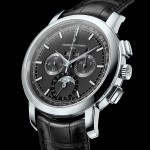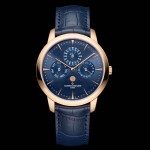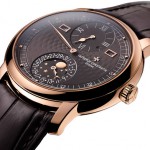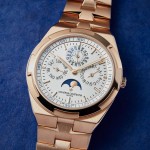Vacheron Constantin Introduces the Overseas Ultra-Thin Perpetual Calendar Skeleton
The ultimate Overseas.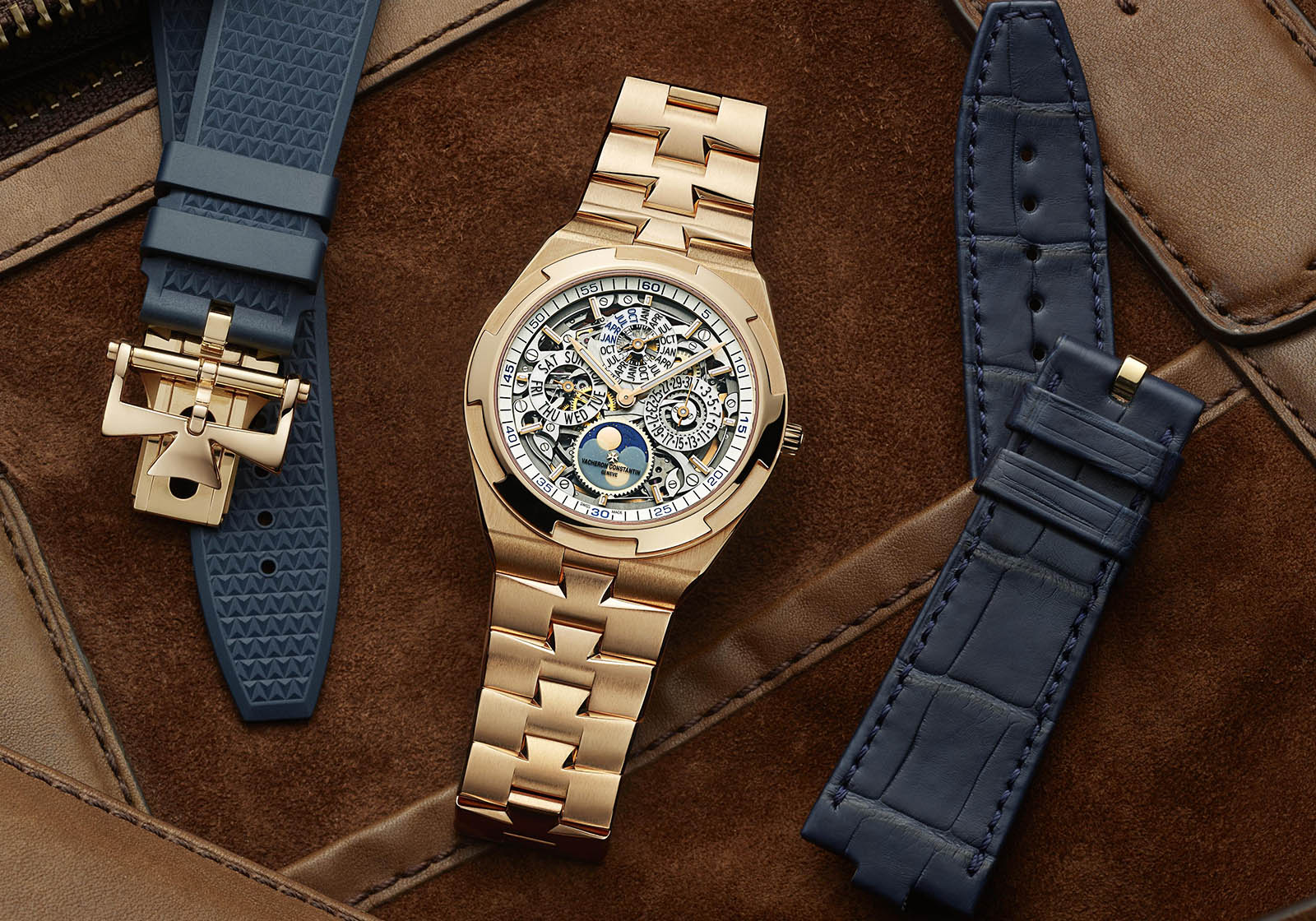
Since its 2016 relaunch after a major revamp, the Vacheron Constantin Overseas collection has filled out nicely with a diverse range of complications, ranging from world time to tourbillon – and even a one-off prototype that was sold for charity.
At Watches & Wonders 2020, Vacheron Constantin debuts the first skeleton model in the line-up, the Overseas Ultra-Thin Perpetual Calendar Skeleton. It has the same gorgeously elegant lines as the standard Overseas perpetual calendar, but now enhanced by the intricately open-worked movement.
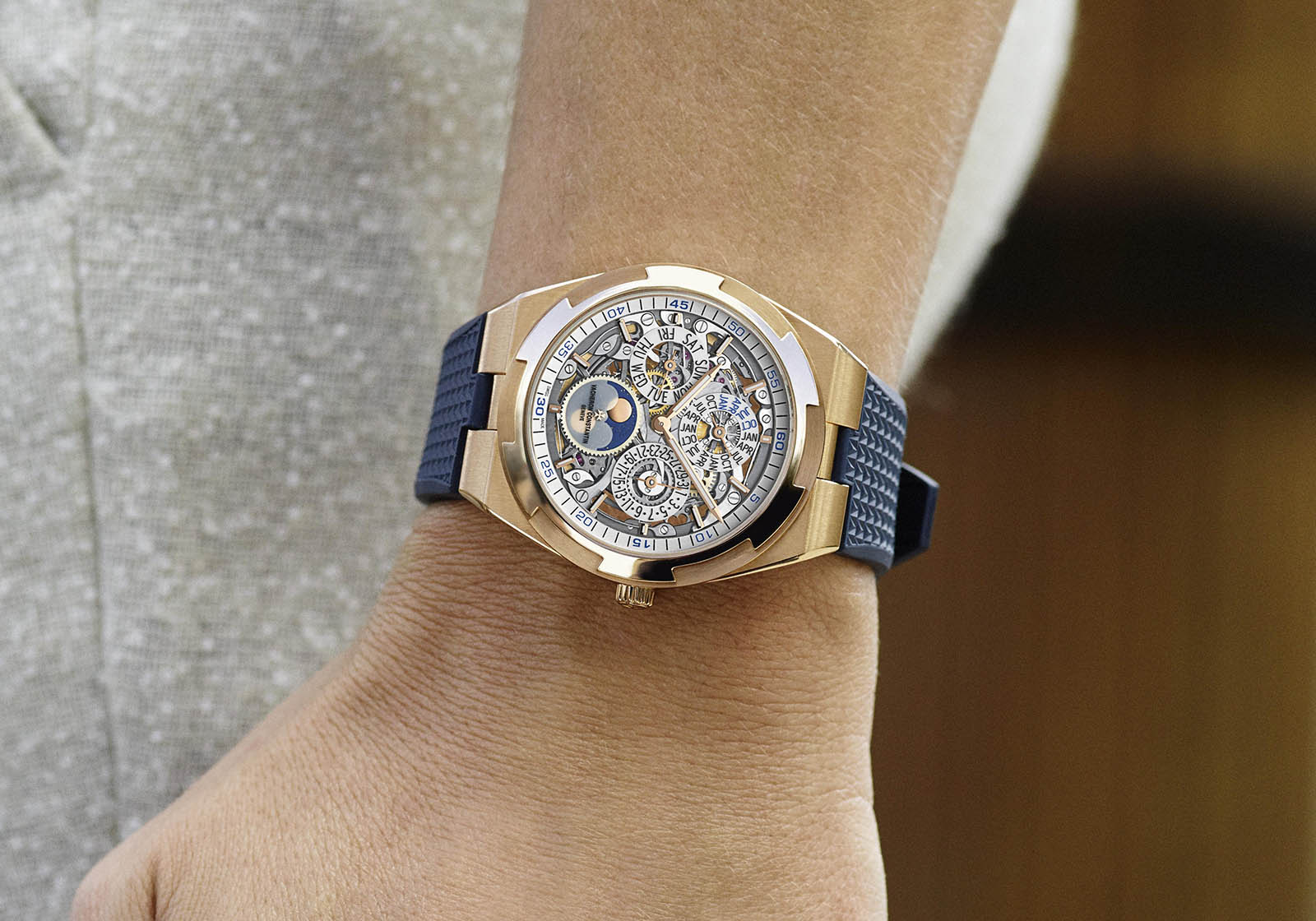
Rendered only in pink gold for now – other variants will surely emerge if the rest of the collection is anything to go by – the case measures 41.5 mm across and just 8.1 mm high, leaving it surprisingly slimmer than both the Patrimony Ultra-Thin Perpetual Calendar that’s powered by the same movement.
In typical Overseas style, both the case and bracelet are finely executed, with alternating brushed and polished surfaces. Even the inner faces of the notches on the bezel are brushed, while the deeply-set inner angles on the bracelet are polished.
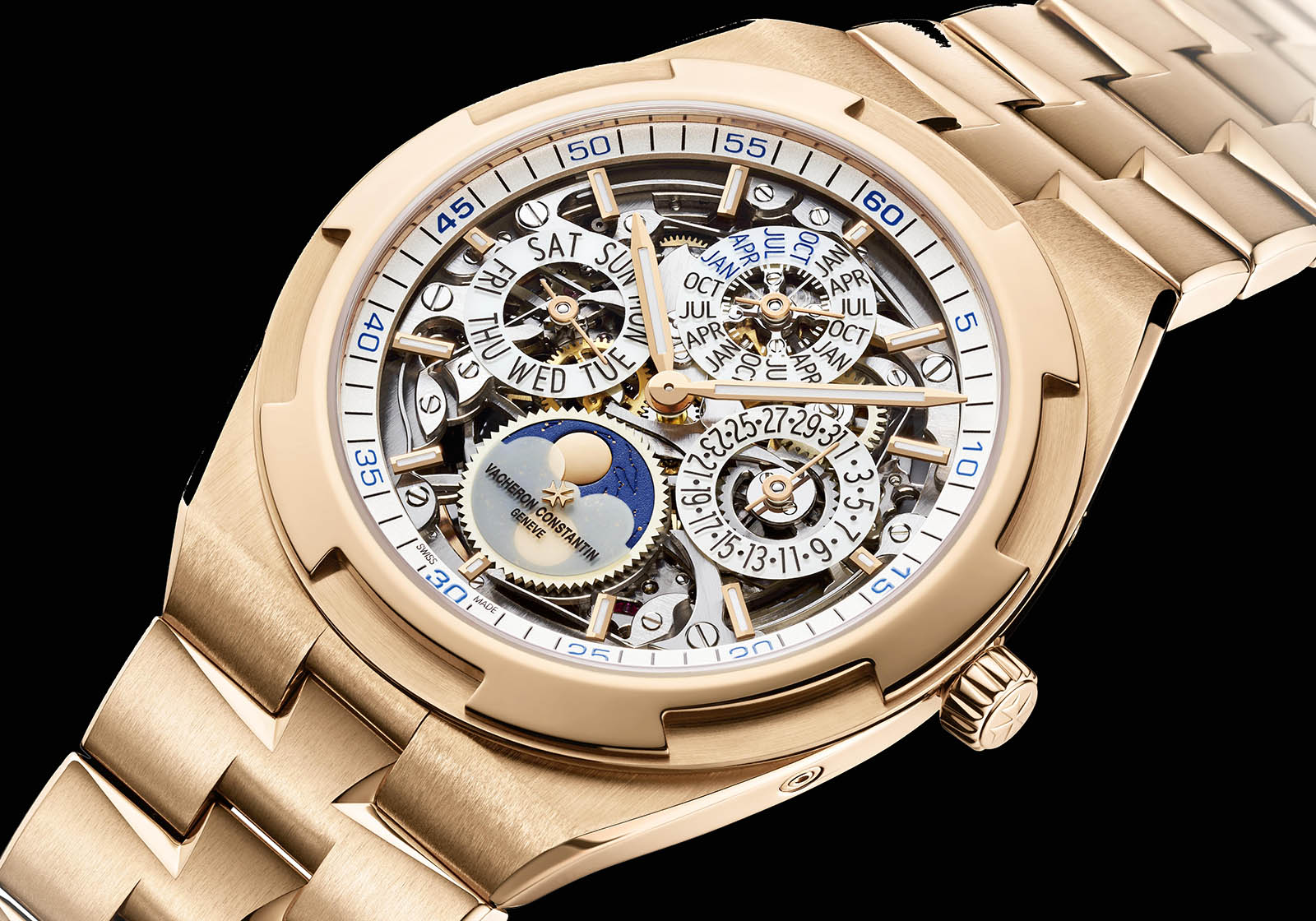
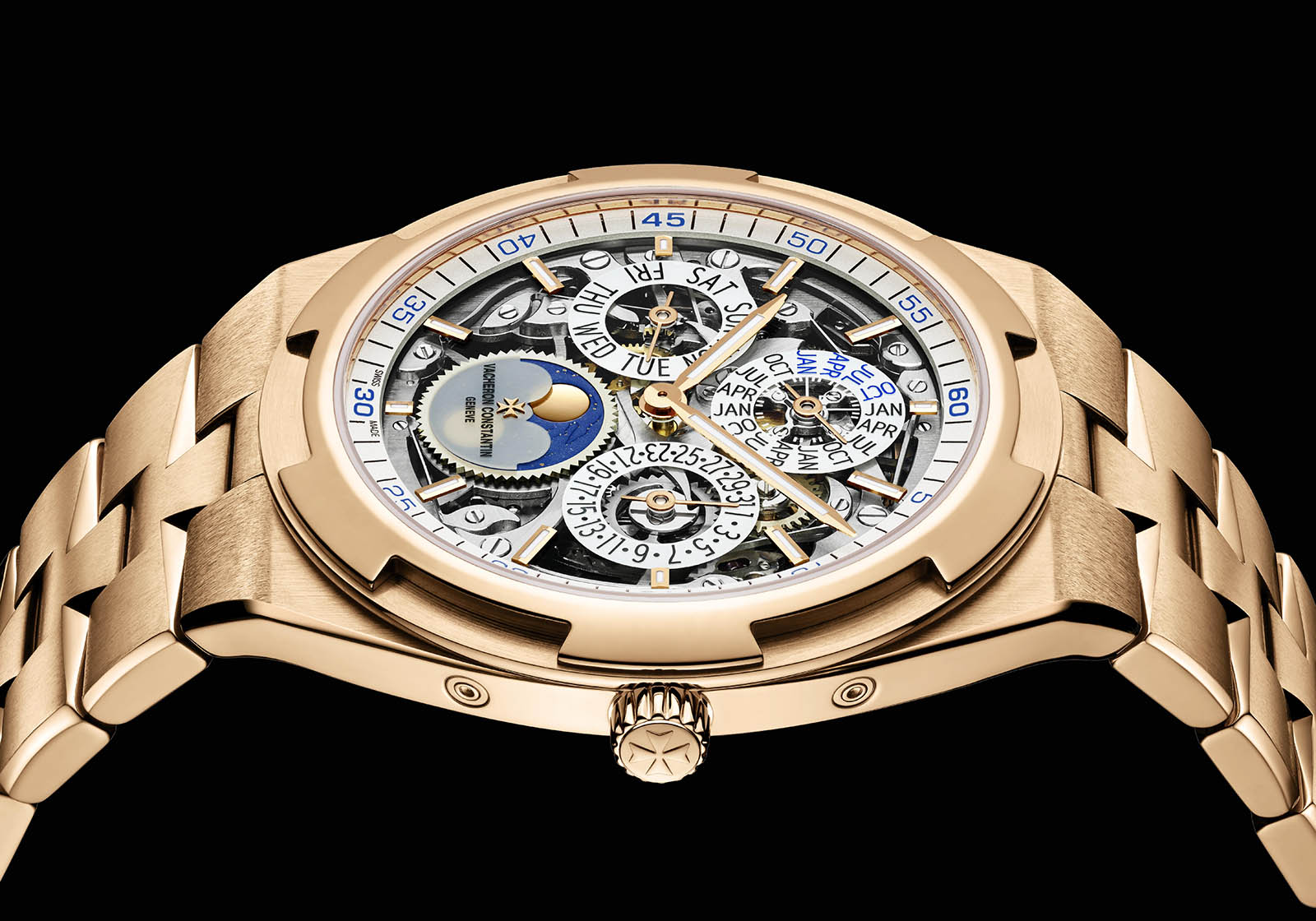
Framed by a minute ring, the dial is mostly clear sapphire with applied hour markers in pink gold, as well as day, date and month counter rings. The moon phase disc at six o’clock is covered by a frosted portion of the crystal to delineate the age of the moon, with a gold Maltese cross applied on the frosted display.
The movement is the cal. 1120QPSQ/1, the skeletonised version of the ultra-thin cal. 1120. Finished with a dark-grey plating, the rotor, bridges and main plate are entirely open-worked, with even the month, date and intermediate wheels skeletonised.
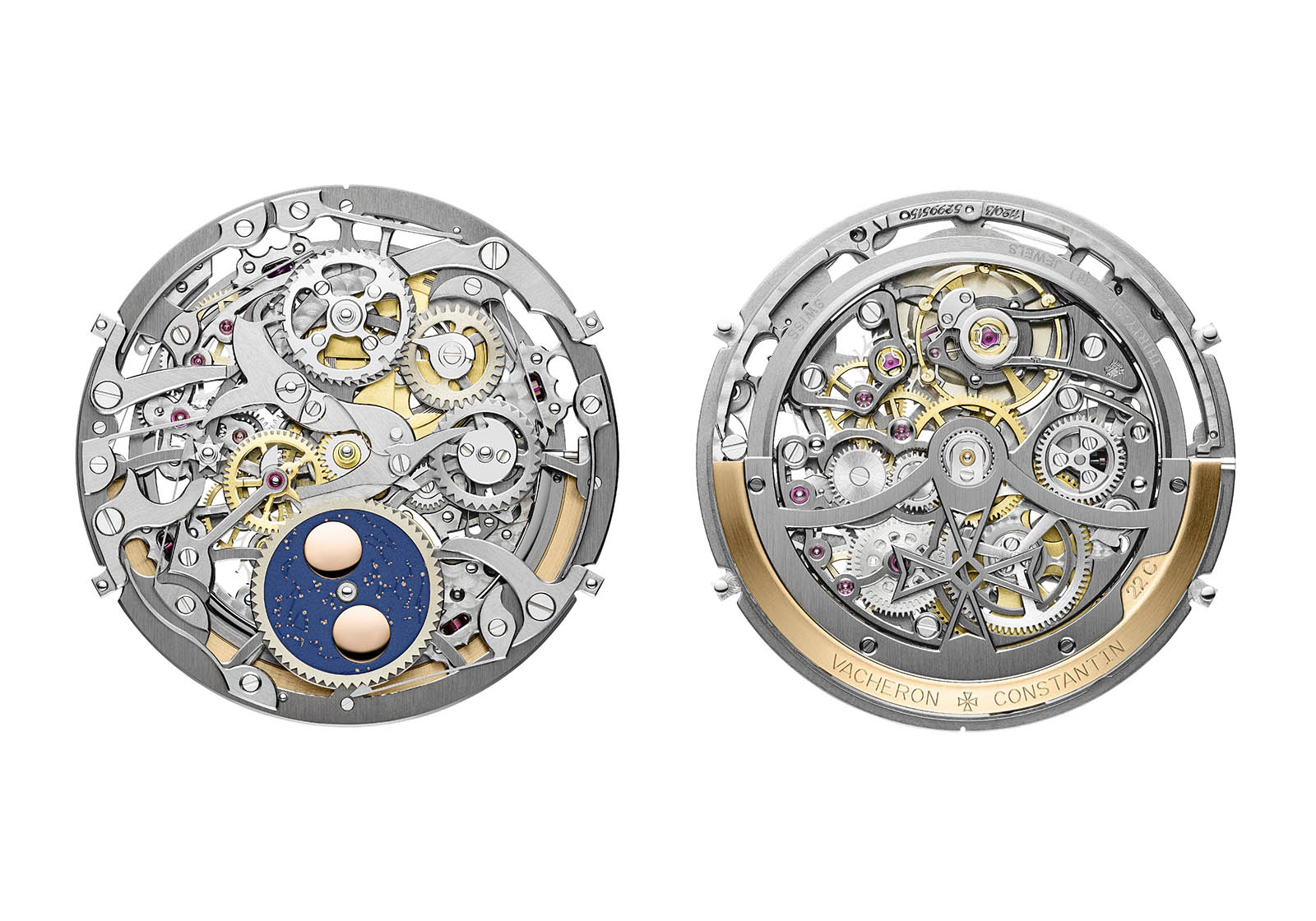
The front and back of the cal. 1120QPSQ/1
While the perpetual calendar module was developed by Vacheron Constantin, the base movement was originally introduced by Jaeger-LeCoultre in 1967 as the cal. 920.
Measuring just 2.45mm high with a full rotor, the cal. 920 powered both the original Audemars Piguet Royal Oak and Patek Philippe Nautilus. However, only Vacheron Constantin and Audemars Piguet still produce the movement today, both doing it in-house after acquiring the rights are different points in time.
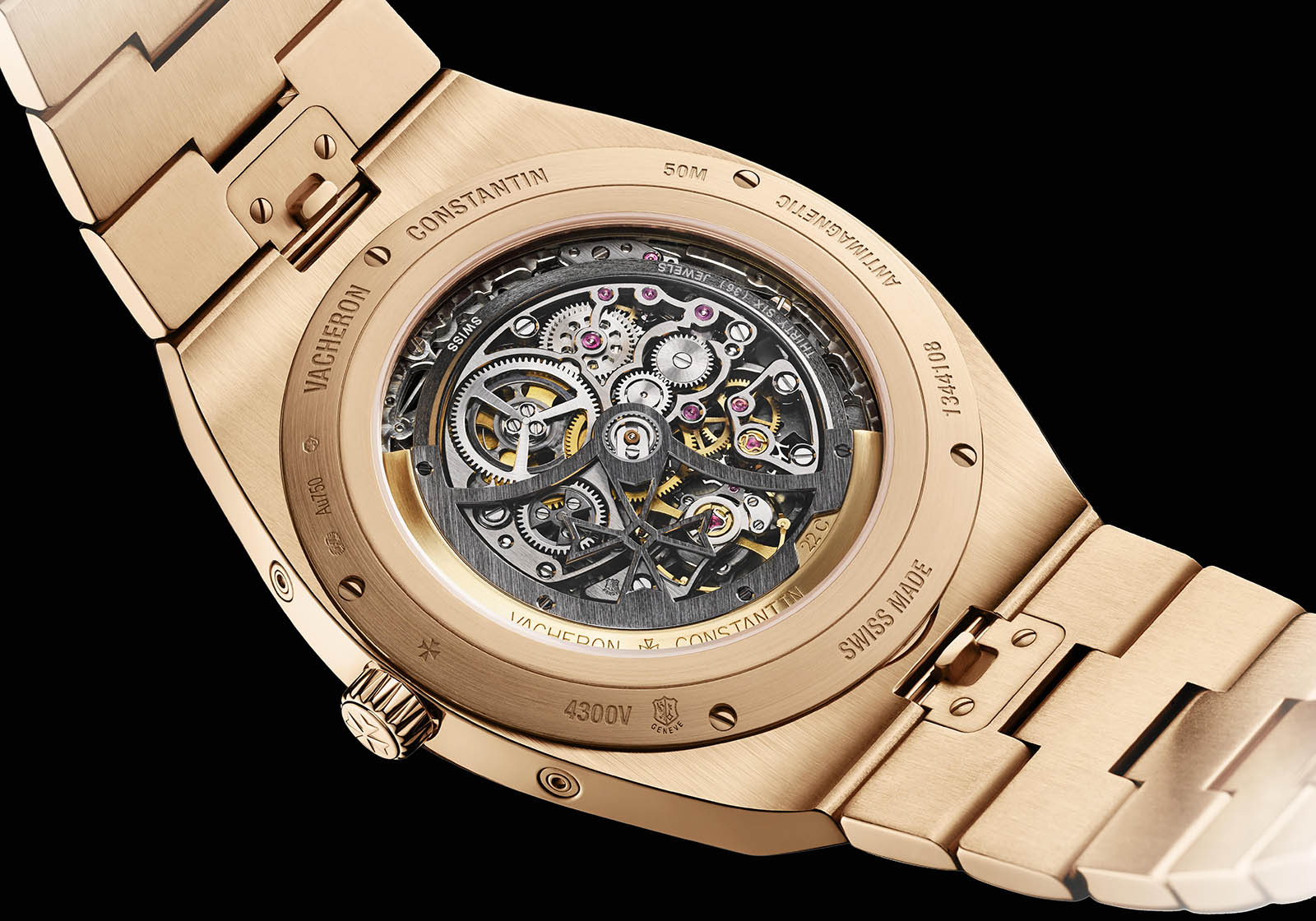
Visible through the sapphire case back, the openworked movement bears the Poincon de Genève, or Geneva Seal, and is fitted with a rotor rimmed in 22k gold and skeletonised to form a Maltese cross. As such, the rotor boasts numerous sharp inward and outward angles.
It’s fitted with a free-sprung, adjustable-mass balance wheel carrying semi-circular weights that can be tweaked to vary the inertia of the balance – pointing the heavier side outwards increases the inertia, and vice versa.
The movement runs at a frequency of 2.75 Hz and has a 40-hour power reserve. And as with all Overseas watches, the model sits within a soft iron ring that offers some protection against magnetism.
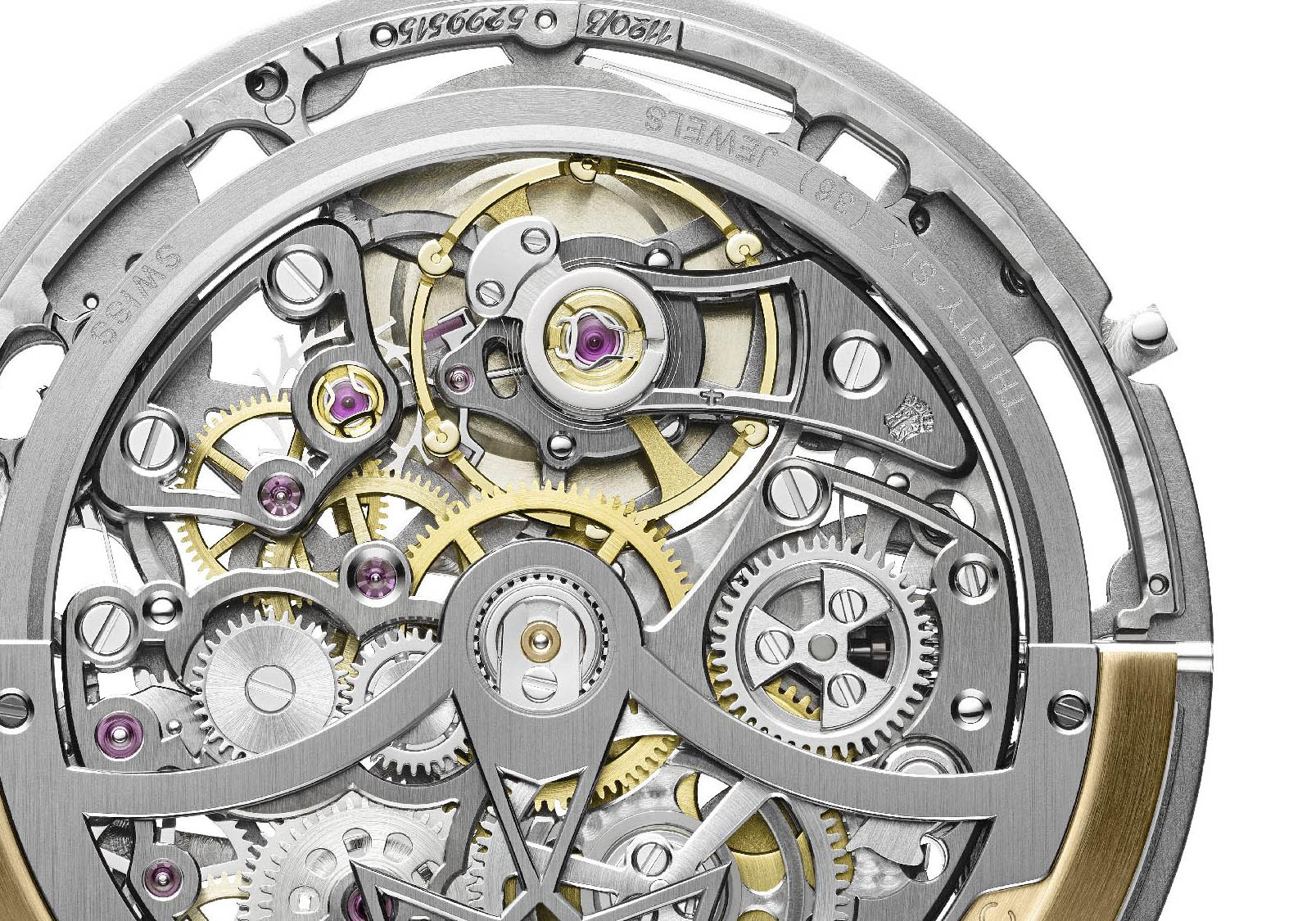
Key facts and price
Overseas Ultra-Thin Perpetual Calendar Skeleton
Ref. 4300V/120R-B547
Diameter: 41.5 mm
Height: 8.1 mm
Material: Pink gold
Water resistance: 50 m
Movement: Cal. 1120QPSQ/1
Functions: Hours and minutes; perpetual calendar with moon phase
Winding: Automatic
Frequency: 19,800 beats per hour (2.75 Hz)
Power reserve: 40 hours
Strap: 18k gold bracelet or alligator strap, both accompanied by a additional blue rubber strap
Limited edition: No
Availability: In boutiques and retailers from July onwards
Price: US$115,000
For more information, visit Vacheron-constantin.com.
Back to top.

